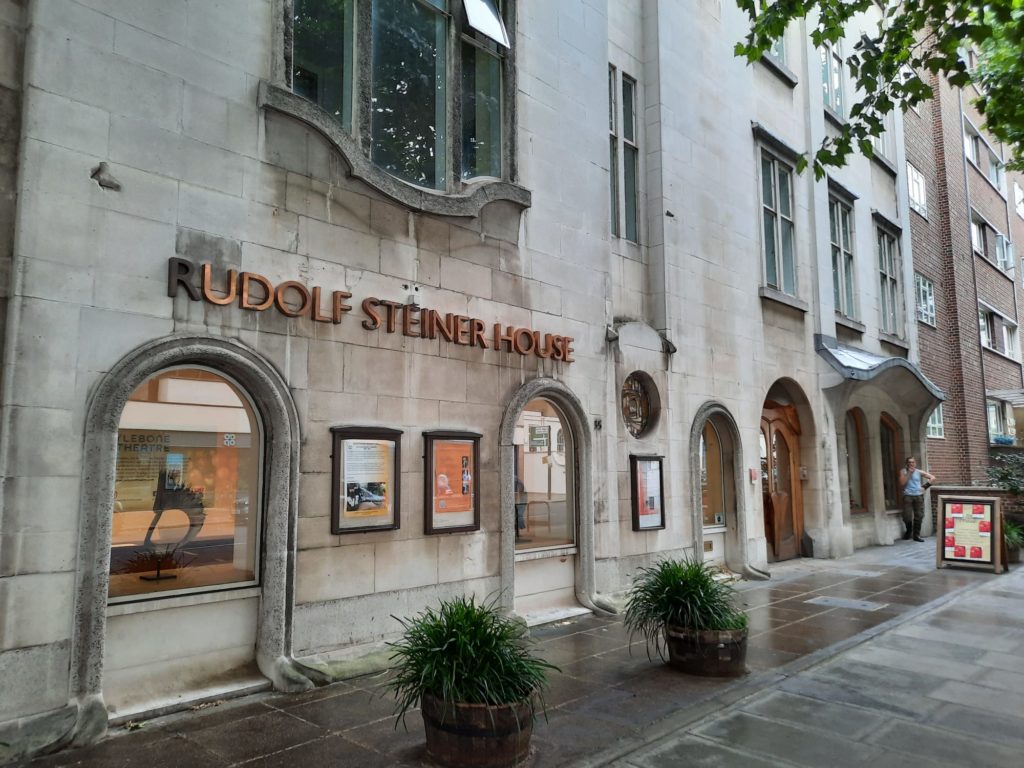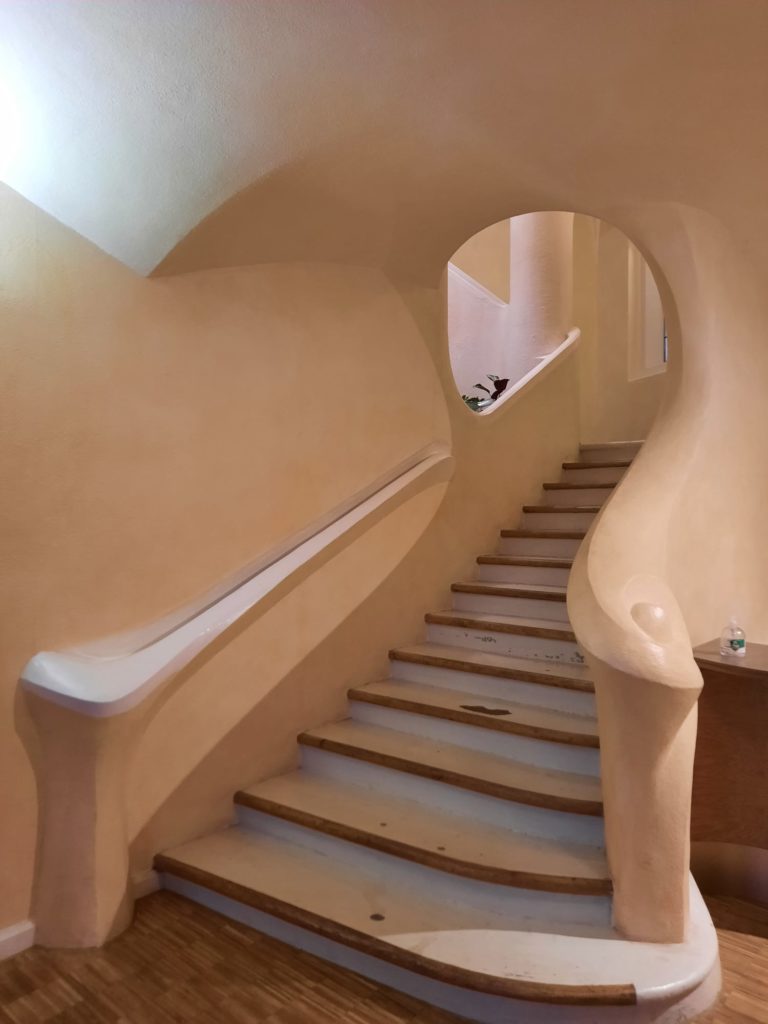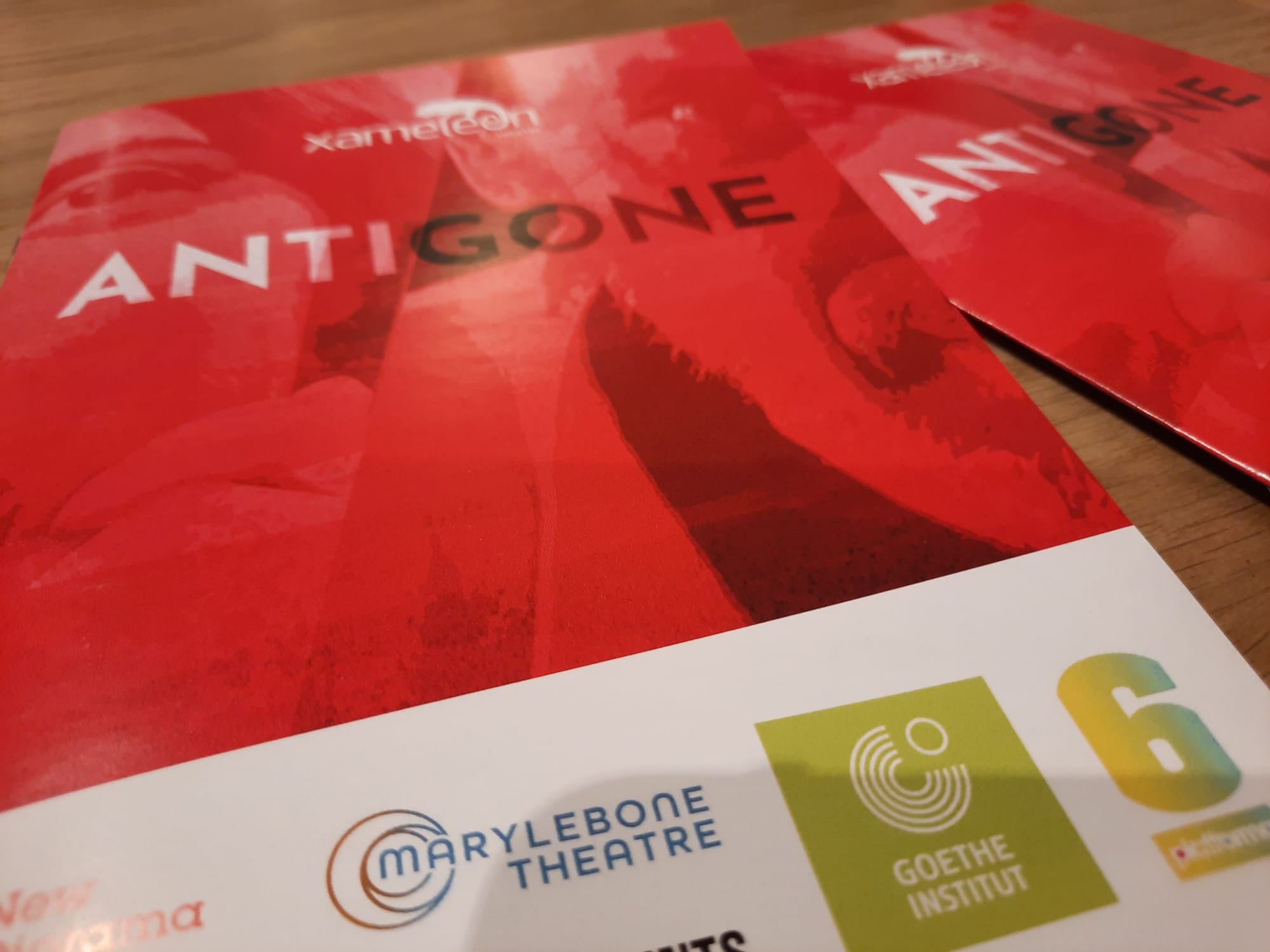Anti-Gone – Xameleon Theatre/Marylebone Theatre, London
A review of Anti-Gone, a new adaptation of the original Greek story performed by Russian-speaking theatre company Xameleon as an anti-Putin retelling.

Anti-Gone
I was intrigued to see Anti-Gone, performed by theatre company Xameleon. Based in London, Xameleon works with artists from countries formerly behind the Iron Curtain, and is thus primarily Russian-speaking. In a typical year, they would draw on varied theatre traditions to stage productions such as Anna Karenina. Or family shows like Le Petit Prince. But this is far from a typical year. And Anti-Gone is not your typical production of the Ancient Greek tale of Antigone, most famous as a play by Sophocles.
Antigone was a young woman of Thebes, from a very unhappy family. A daughter of Oedipus (he of the complex), two of her brothers have just died on opposite sides of a war. Her maternal uncle Creon has claimed the throne. He buries one as a hero and refuses to allow the burial of the other. Antigone takes on Creon, determined to honour Polynices with funeral rites, and is condemned by her uncle to be entombed alive. In typical Greek tragedy fashion, a lot more people than just Polynices and Antigone are dead by the end.
Sophocles wrote his Antigone during a time of unrest in Ancient Greece. It does not refer overtly to the contemporary political situation, but is nonetheless a pro-democratic condemnation of tyranny. Creon’s downfall is that he is surrounded by yes-men, and out of touch with his people. He is intemperate and disregards warnings, and it leads to his downfall.
Are you thinking what I’m thinking? Time for a new adaptation which explores abuses of power and dictatorial regimes in the world today. Xameleon have staged just such an adaptation, by Russian playwright Evgenia Palekhova. The coverage promoting Xameleon’s Anti-Gone has gone one step further: this is an anti-Putin play.

Ancient Greece And Modern Woes
Staging an anti-Putin play isn’t a straightforward thing. Even if you’re based in London, you may have family and friends in Russia. This was also the case when we saw the Belarus Free Theatre back in March. So the adaptation and production make this connection through subtext rather than overtly. Creon is still Creon. Antigone is still Antigone. But this Antigone is all about standing up to absolute power. And this Creon is very concerned with how he appears to others, with his own cameraman on hand while he and his niece debate on stage.
I liked elements of Anti-Gone very much, but I’m not quite sure that, taken as a whole, this production has yet reached its full potential. It is a two-hander, with strong performances from Vlada Lemeshevska as Antigone and Oleg Sidorchik as Creon. Reducing the list of characters brings it in to become something much more claustrophobic, making Lemeshevska’s quiet strength while Sidorchik volleys between extremes of anger, cajoling and an unexpected foot fetish all the more admirable. Meanwhile the design, by Maria Soshina, created a slightly surreal world that reminded me more of a play by Beckett or Ionesco than a Greek tragedy. It was slightly jarring; perhaps that was the intention, but at times I found it hard to follow the purpose of certain themes and artistic decisions.
The arts are a key way that many of us make sense of our world. Seeing this production, albeit through the language barrier of surtitles, was an insight for me into a response of some Russian-speaking creatives to their lived experience. With the world tending more towards despots at the moment than away from them, perhaps Putin is not the only one who should heed the example of Creon before him.
Salterton Arts Review’s rating: 3.5/5
Anti-Gone was performed at the Marylebone Theatre from 17-19 June

A Note on the Marylebone Theatre
This was my first time visiting the Marylebone Theatre, mostly because it is brand new! So I wanted to finish with a quick word on this interesting space. The Marylebone Theatre is in Rudolph Steiner House, near Baker Street Station and Regent’s Park. Rudolph Steiner House, built between 1926 and 1937 and Britain’s only expressionist building. The flowing forms are a little reminiscent of Gaudi.
Rudolph Steiner has had a lasting impact in the world of education; but Rudolph Steiner House is more about his spiritual legacy. Steiner’s concept of anthroposophy was about reconciling spirituality and science; this is the headquarters of the Anthroposophical Society of Great Britain, with a range of resources as well as events and talks on a regular basis. It reminded me a little of Swedenborg House in Holborn in its community function.
As well as his work in education and anthroposophy, Steiner also wrote mystery plays (did you know The Eurythmics take their name from his term eurythmy, a form of movement depicting the hidden, inner gestures of music and speech?). So it is fitting that Rudolph Steiner House has become home to the Marylebone Theatre. With handy transport links, comfortable seating and what looks like a brand new audiovisual set up, this is a nice small-scale addition to London’s theatre scene.
If you see this after your page is loaded completely, leafletJS files are missing.


One thought on “Anti-Gone – Xameleon Theatre/Marylebone Theatre, London”